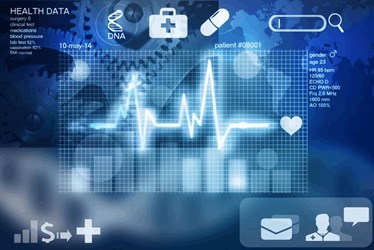Evolving The EHR: What Apple's App Store Can Teach Us
By G.T. LaBorde, IllumiCare

What if your mobile browser was the only app on your phone? Imagine how much longer it would take to complete all the tasks you use your phone for — whether sending an email, completing a bank transfer, scheduling a rideshare, ordering groceries or listening to music. Our apps streamline access to certain information, automatically log us in, remember our previous orders or destinations, and are, to put it simply, efficient.
While the browser is essential, operating your phone by solely relying on the mobile browser would be cumbersome and slow. Yet that’s exactly how many physicians experience another digital ecosystem: electronic health records (EHR).
Dialing In On The Data
EHR platforms can handle an immense range of data and tasks. These tools are designed to have everything for everybody, from physicians to phlebotomists, registrars to billing specialists. EHRs, like web browsers, are essential to the healthcare system.
But for any individual user, this vast repository of information has grown too big to navigate easily – with seemingly endless workflows, sidebars and layers. And that means physicians are drowning in data, yearning to quickly access the data they actually need in that moment.
In a Harvard Business Review article, The Mayo Clinic found that out of 50,000 data elements available to its ICUs nationwide, “only 60 pieces are crucial patient information that clinicians needed to access quickly and easily for effective care.”
Each clinician needs a user interface designed for their specific needs and workflows. It’s clear that healthcare IT needs to evolve, and quickly.
Setting A New Vision
The parallels between web browsers and EHRs are a helpful lens for identifying not only challenges, but also potential solutions. When it comes to combating physician burnout while preserving the benefits of EHR, maybe the answer is right in our pockets.
What would an enhanced model for the EHR look like? The answer is not to replace, or at this point even overhaul, EHRs, but to co-exist with them in a broader platform of apps, while maintaining interoperability. The future of an evolved EHR ecosystem might look something like this:
- EHR-Agnostic: EHR-specific app stores still require innovators and health systems to do one implementation at a time. We should reduce friction between the people with creative ideas and the users who want to take advantage of them with an open platform of apps that is EHR-agnostic.
- User-centric: In hospitals, IT should operate as a service provider to internal users. To reimagine the EHR ecosystem, we must see the clinical team as the “customer” and ask what would make them more effective in their roles. Developers should employ “design thinking” by focusing on the users these apps are meant to serve.
- Customizable: Healthcare isn’t “one size fits all,” yet our current model is built that way. Clinicians need options to tailor their experience based on their specialty, the patient’s condition and acuity, and the purpose of their visit. This “context-specific” model would streamline workflows. Individual user hyper-personalization is the key to reducing data density and information overload.
- Minimally disruptive: EHRs can generate a barrage of pop-up alert messages, causing providers to suffer from “alert fatigue.” Apps should minimize unnecessary disruptions by giving the power to each user to turn on/off notifications, like our phone allows, and to “thumbs up/down” things relevant to them, like Pandora allows. Let’s trust clinicians, because interrupting them constantly with irrelevant things is not helpful.
- Task-oriented: In the same vein, apps can provide a streamlined pathway for common tasks a clinician needs to perform. Those individual workflow items could include:
- Checking for prior opioid exposures
- Finding and automatically distributing coupons for medications
- Comparing costs for medications and tests
- Seeing population health analytics concurrent with an ambulatory visit
- Quickly seeing the results from prior tests, even from other health systems
Early Results
In launching the IllumiCare Smart Ribbon, we started with these considerations in mind. This technology was born out of one clinician’s desire to make critical information more visible without disrupting workflow.
Tools built this way are effective in limiting the multi-platform experience many clinicians face in gathering all the data necessary to make an informed decision. Examples of where we’ve been able to apply the App Store model include, educating providers about costs and efficiency opportunities in real-time, streamlined access to PDMP for controlled-substance prescribing, antimicrobial stewardship and accessing state health information exchanges.
Providers have traditionally had to dig for this data in the EHR system or access this data through external means. With these data sources at their fingertips, they can drastically reduce their “click counts” and return the focus to the patients.
As an example, North Mississippi Health Services, a community hospital serving 24 counties in north Mississippi and northwest Alabama has used IllumiCare’s technology to access the PDMP with just one click. The technology is not only a huge time saver for providers, but it also improves compliance with the new opioid regulations released in October 2018. Clinicians using the app have reported saving one to three minutes of time per search. Over just three months, the app saved: 183,396 clicks, 250 to 750 hours, and $19,000 to $57,000 (calculated based on average salary rate of a primary care provider).
It’s clear that much more innovation is needed in the continuing pursuit of improving healthcare IT. We need to adopt the aspects that make the use of mobile so widely embraced. Most importantly, we must harness the political and entrepreneurial will to enhance the clinical user experience — for the sake of provider effectiveness and ultimately, patient well-being.
